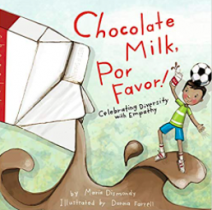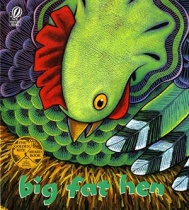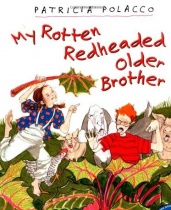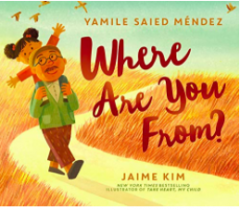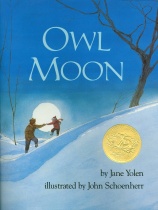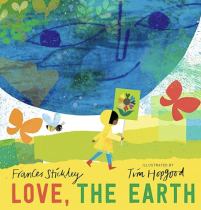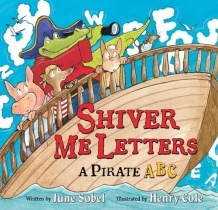The end of a school year is always a bitter-sweet one for teachers as we begin to let our students fly to their next destination while cherishing the poignant lessons along the way. During a recent reflection, Kylie dropped a beautiful tree into my hands. The names of every student were on the branches and the words equality, love and “growing together” were placed near the trunk. Though in my younger teaching years I may have analyzed growth through test scores and contemplated data-driven academic goals for the upcoming year. This year, In the wake of yet another school tragedy, I focus on growth in a very different way.
As a Pittsburgh native, the first time I watched Mr. Rogers’ Documentary Won’t You Be My Neighbor was right before the Tree of Life Synagogue Shooting in Pittsburgh, and I find myself viewing it again in the wake of the recent Robb Elementary shooting in Uvalde, Texas. Mr. Rogers understood the importance of social-emotional learning through play, creativity and imagination within the classroom. He also understood the heaviness of the world balanced with the journey of childhood and the importance of discussing feelings and grappling with difficult emotions. As adults, we sometimes forget how vulnerable it is to be a child. As Fred so eloquently stated, “I had to speak to the families of our country about grief. A plea not to leave the children isolated. Children have very deep feelings just the way parents do. Just the way everyone does. Our striving to understand those feelings and better respond to them is what I feel is our most important task in this world.”
Students came into this school year with huge feelings. I vividly remember during a follow-up lesson on arrays and multiplication equations, I placed students in partner pairs to work on discovering real-life arrays within the classroom. Egg cartons were set out from home, book shelves, an Oreo cookie package, etc. and I was excited for this hands-on, cooperative lesson.
Within two-minutes, Lee came up to me with a furrowed brow and angrily exclaimed,
“I am not working with him anymore!”
A second student loudly yelled at another student, “That isn’t how you do it. We have to do it my way.” Both students burst into tears.
Finally, a third partner pointed at Robert in the classroom and explained through tears, “He says he doesn’t want to do the problems. He is tired, and he won’t help me and now I don’t have anyone.”
Eli took his paper and ripped it in half. Robert was hiding under his desk and eventually fell asleep that day.
I stopped the lesson and brought the students back to their desks, and we took two minutes to listen to our feelings. I modeled my feelings for the students, and I told them I was irritated, perplexed, embarrassed and sorrowful all at the same time. I had my students brainstorm why I might be feeling this way.
“The lesson had to stop.”
“People were crying and yelling at each other.”
“We weren’t being kind.”
“There was so much anger.”
I then had students share their feelings, and we brainstormed strategies.
We discussed the importance of working with our neighbor and not just beside them. We discussed the importance of multiple ideas in mathematics. We discussed listening to our neighbor and their feelings. We also discussed that anger is a natural feeling, but we have to know what to do with it. We discussed the importance of apologies. We discussed how to love.
This small conversation was the first of hundreds held within the classroom this year. It was also a wake-up call to me that social-emotional learning and trauma-informed teaching must be embedded in everything we do.
Though a seventh-year teacher, this was a year of many firsts. It was the first time I sought out trauma-informed training and secured a quiet cool-down space within the classroom. It was the first time I utilized meditation within the classroom to calm our minds and hearts. It was the first time I intentionally incorporated more partner-pair and small-group activities to allow time for students to practice collaborating, conversing and listening. It was the first-time conversational circles were utilized as a strategy to discuss feelings and books were read daily to think about our inside anxieties and fears.
As Fred Rogers used to say, “The outside world of children’s lives has changed but their insides haven’t.”
As I see the 19 beautiful faces of the students whose lives were taken (a similar age to the students I work with every day), and I gaze at the tree Kiley made for me, I realize how important educators are as we rebuild a world that listens to children and validates their emotions.
We have many students struggling with who they are.
Often, I wonder if I'm a mistake
I'm not supposed to be scared am I
Sometimes I cry and sometimes I shake
Wondering isn't it true that the strong never break
I'm not like anyone else I know
I'm not like anyone else
Childhood lays the foundation of who we will become, and it is not an easy journey. We must recognize the students who need extra support, guidance and therapy as they continue to reckon with who they are and who they wish to become. As early-childhood educators, we are blessed and challenged with laying down the foundations of hope, acceptance, joy and love. Love is what will make all the difference. Our work is just beginning.
